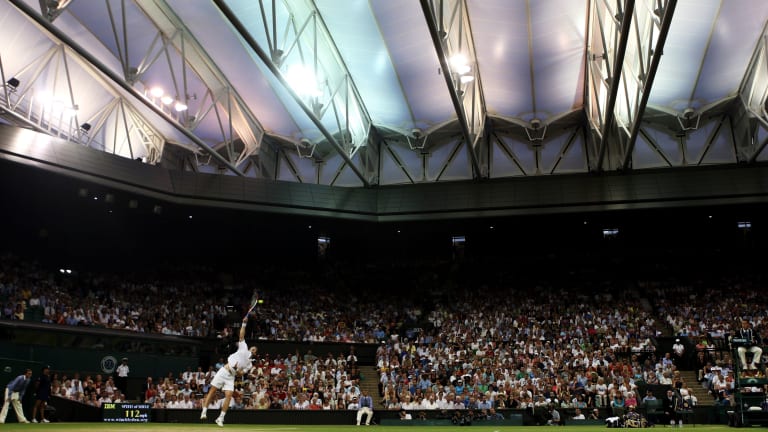#CentreCourtCentennial
2009: The first full match under Centre Court's roof showcased British tennis' newest Wimbledon title contender, Andy Murray
By Jun 23, 2022#CentreCourtCentennial
Serena Williams' energetic return to Centre Court after a year away from the game was a brave effort, and one worthy of her legend
By Jun 29, 2022#CentreCourtCentennial
2008: Rafael Nadal and Roger Federer produced a quantum leap in quality and entertainment in their classic, daylong final
By Jun 22, 2022#CentreCourtCentennial
2007: After fighting for pay equity at Wimbledon, Venus Williams became the first woman to collect an equal-sized champion’s check
By Jun 21, 2022#CentreCourtCentennial
1980: The five-set final between Bjorn Borg and John McEnroe was the pinnacle of their rivalry—and the Woodstock of their tennis era
By Jun 20, 2022#CentreCourtCentennial
1975: In defeating a seemingly invincible Jimmy Connors, Arthur Ashe showed that with enough thought and courage, anyone in tennis can be beaten
By Jun 19, 2022#CentreCourtCentennial
1968: At the first open Wimbledon, Billie Jean King receives her first winner’s check—and notices a “big difference” with her male counterparts
By Jun 18, 2022#CentreCourtCentennial
1967: With the Wimbledon Pro event, professional tennis finally comes to the amateur game’s most hallowed lawn
By Jun 17, 2022#CentreCourtCentennial
1957: “At last! At last!” Althea Gibson fulfilled her destiny at Wimbledon, and with every win she opened up the sport a little wider
By Jun 16, 2022#CentreCourtCentennial
1937: With a World War looming and one man playing for his life, Don Budge and Baron Gottfried von Cramm stage a Davis Cup decider for the ages
By Jun 15, 20222009: The first full match under Centre Court's roof showcased British tennis' newest Wimbledon title contender, Andy Murray
The tournament's infamous rain delays were over as a 22-year-old Scot won a fittingly epic, and epically loud, five-setter over Stan Wawrinka.
Published Jun 23, 2022
Advertising
Advertising

“I tell you what, the treble-heavy echo inside Centre Court is highly irritating, Wimbledon now boasting all the sexy ambience of your average provincial leisure center.”
© 2009 Getty Images
Advertising

“I think Wimbledon might finally have fallen in love with him.”
© AFP via Getty Images
Advertising

Get to Know, Now: Henry Searle
The 2023 Wimbledon boys' champ trusts self-improvement mindset will see things fall into place.